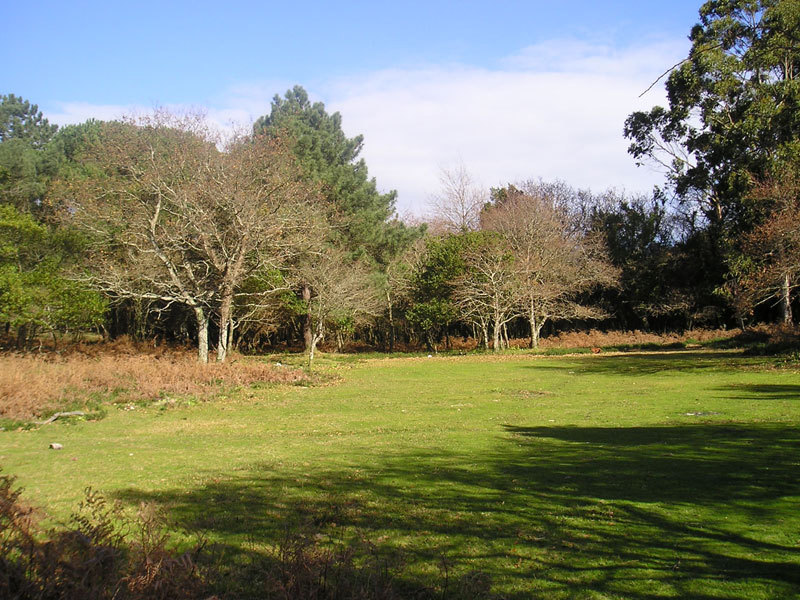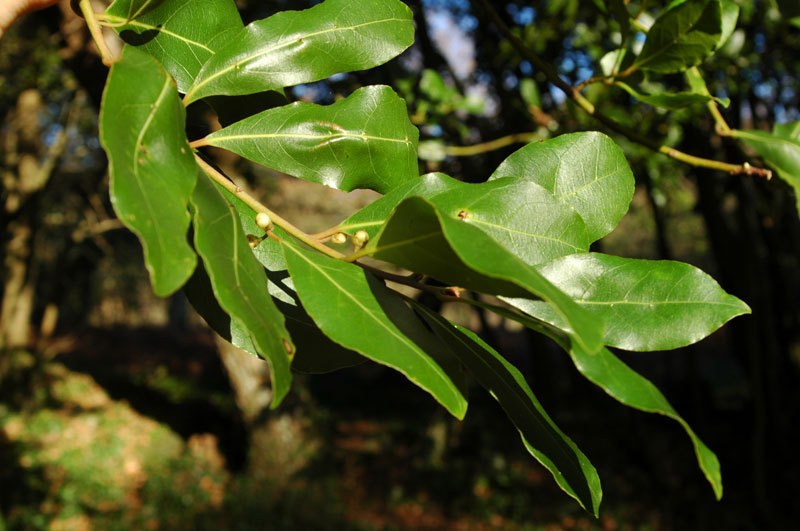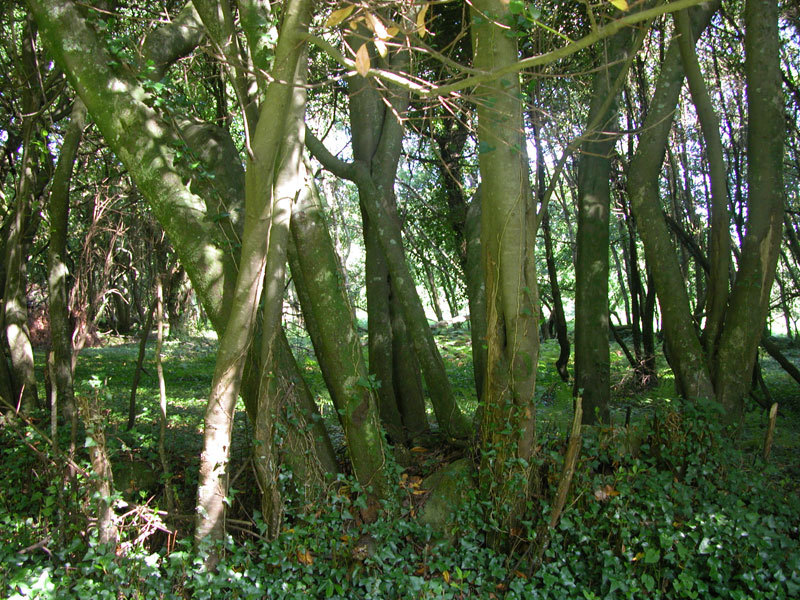The archipelago of Cortegada has very different conditions with respect to the other three islands that make up the park. Apart from being within an estuary, the estuary of the river Ulla, not the inlet of them, it´s relevant and surprising its dense, spontaneous natural autochthonous woodland. It´s not the same as in the rest of the islands of the Park where the adaptable forests of pines, acacias and eucalyptus abound.
Cortegada´s landscape century was very different from the current until the first third of the twentieth century, prevailing culture divided fields, separated by boundaries of laurels and willows. With the abandonment of the population, crop and much of the livestock there grazing the autochthonous current vegetation will grow in these boundaries; either an oak , laurels, willows, chestnuts, alder will emerge or hawthorns with some stains of pines and eucalyptus.
The forest of laurels in Cortegada is one of the largest in Europe, occupying somewhat waterlogged soil or water accumulation.
It should be noted that within this archipelago, on the island Malveira Grande, there is one of the few small forests of "melojos" from the Galician coast, accompanied by specimen of laurels and hawthorns.
In addition, it has also an unusual and extraordinary abundance, richness and diversity of mushrooms and fungi, with hundreds of listed species .


